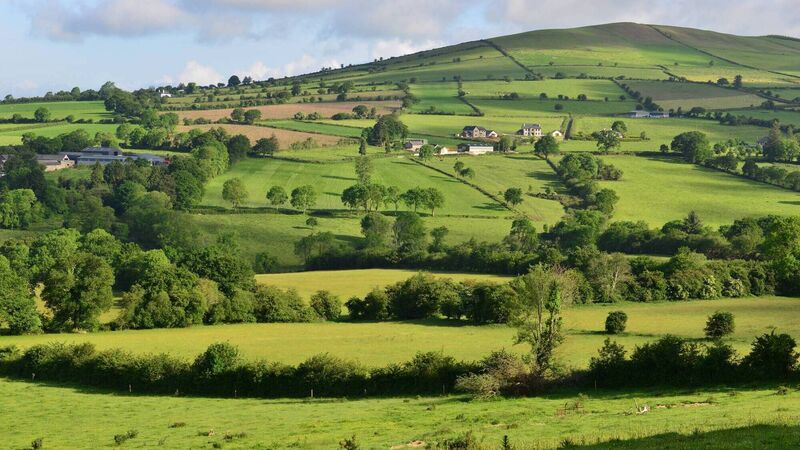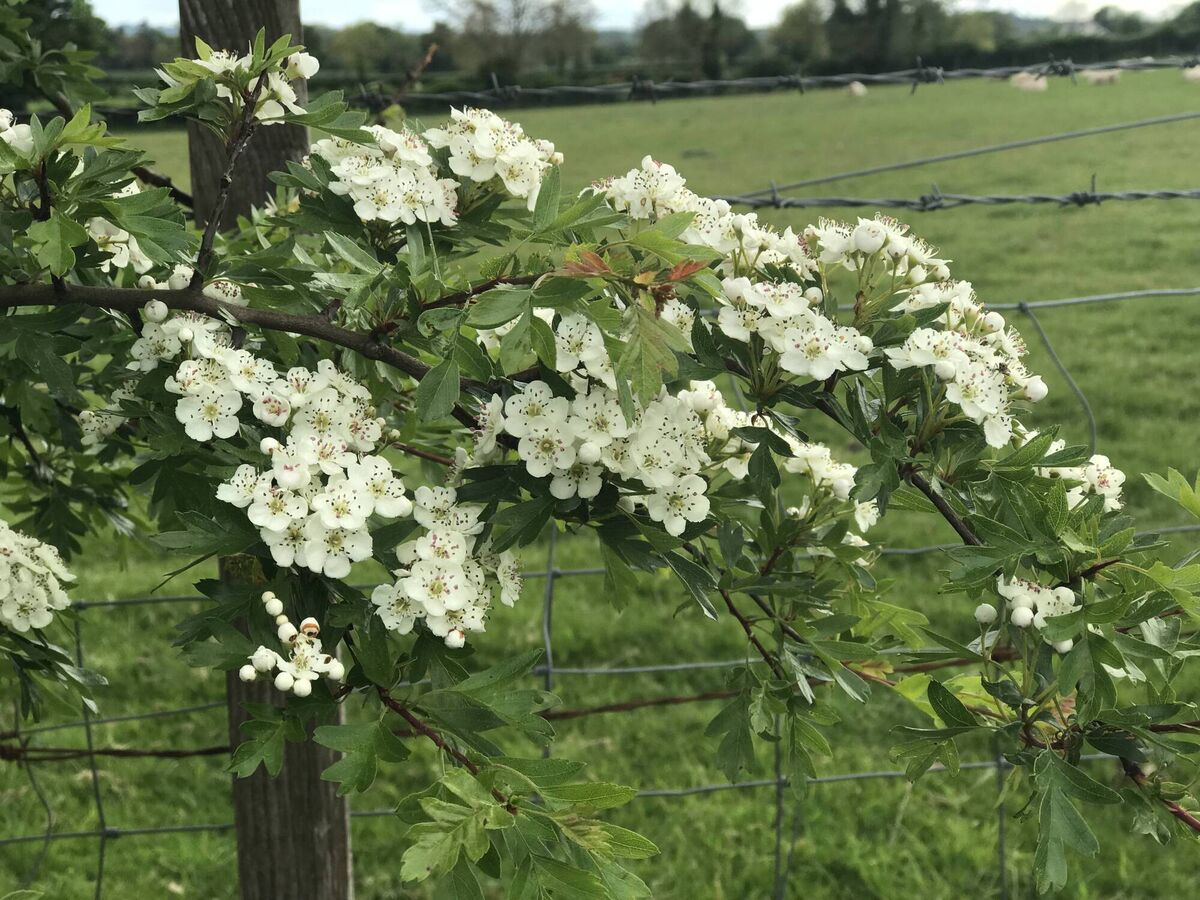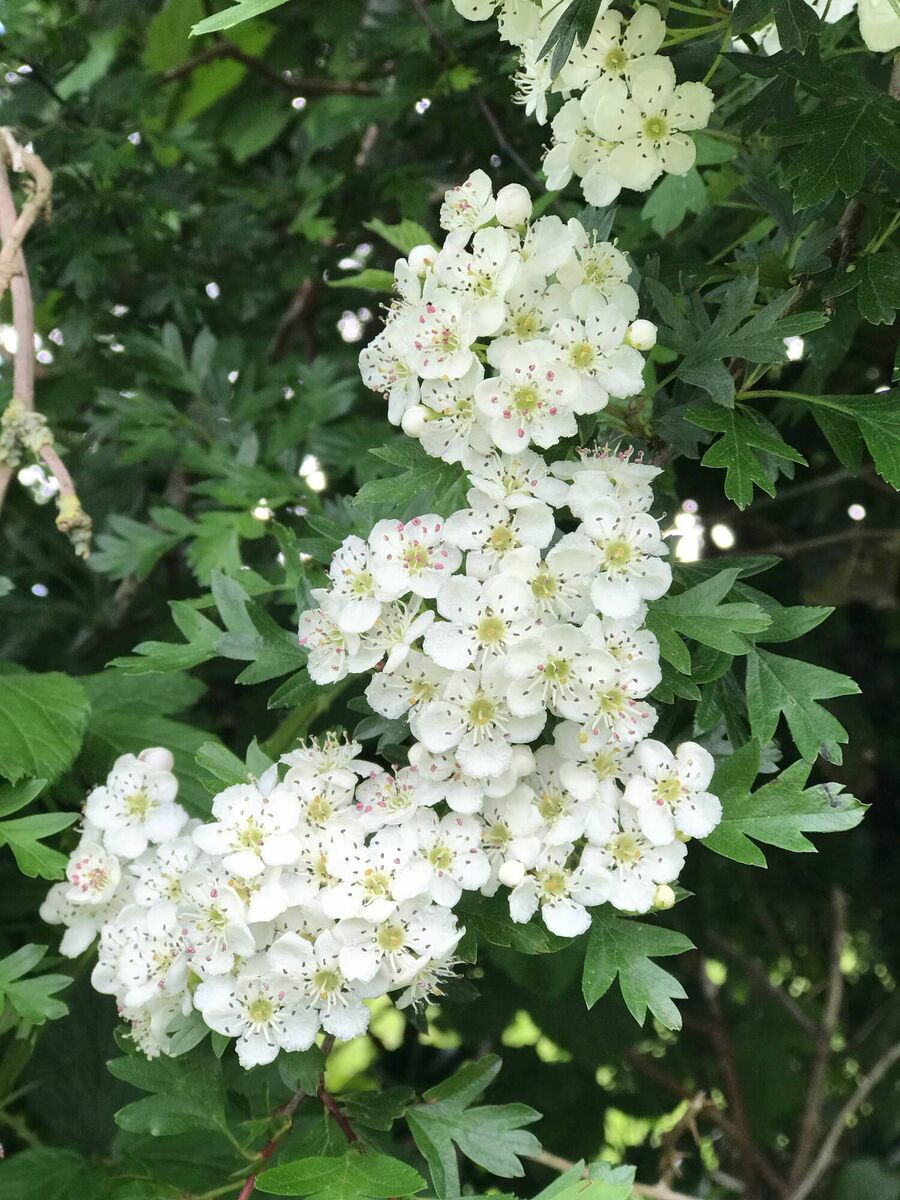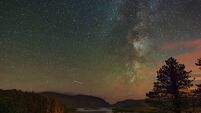Juanita Browne: Celebrate World Bee Day by helping our wild bees

Our native hedgerows are an intrinsic part of the Irish landscape and should be protected and managed in the most biodiversity-friendly way.
World Bee Day is coming up on May 20 — it's a day to celebrate our bees and consider helping them.
We have 100 species of wild bee in Ireland: 21 bumblebees and 79 solitary bees — but unfortunately one-third of Ireland’s wild species are threatened with extinction. This is because we have changed our landscapes so much, and removed safe foraging and nesting sites, as we ‘tidy up’ the countryside, removing hedgerows, mowing wildflowers and spraying pesticides.
The All-Ireland Pollinator Plan is an amazing scheme that works with all sectors to help pollinators, including schools, farmers, businesses, community groups and councils. It offers lots of free resources, how-to guides, videos and plant lists, which can all be accessed at pollinators.ie.
And by helping wild bees in the countryside, you’ll also be helping all types of biodiversity, from wild plants to birds to bats. What’s good for bees is also good for other wild creatures. More bees mean more wild plants (which they pollinate) which produce more fruits and seeds for birds and mammals. The single action that would have the greatest impact on pollinators — and biodiversity in general — is the conservation and wildlife-friendly management of our native hedgerows.

The Irish landscape is defined by our patchwork of fields, crisscrossed by native hedgerows, which consist mainly of hawthorn bushes and trees. In May, the hawthorn comes into flower, and dapples the countryside with its white blooms, giving it two of its other names: whitethorn or maybush.
Hawthorn is one of the most vital plants to Irish wildlife: it supports approximately 150 different insect species and produces lots of nectar-rich flowers for pollinators now, and red haws in autumn for birds and mammals to enjoy.

Of course, the hawthorn is also long associated with folklore, mythology and legend in Ireland. There is a strong connection with fairies and a circle of hawthorns was interpreted as fairy forts. There are lots of stories of harm or even death befalling those who interfere with the ‘fairy thorn’ — especially a lone hawthorn tree growing in isolation, and it was considered bad luck to bring a hawthorn branch inside your house. In some places, people would leave small gifts of food or drink at a fairy fort or at the base of a lone tree, for the fairies. The hawthorn is also closely associated with holy wells with healing properties. Pilgrims often tied rags to the tree as offerings, and this can be seen in some places to this day.
In addition to pollinators, lots of other species rely on our native hedgerows. Good hedgerows provide shelter for nesting and overwintering and act as corridors that help animals move safely through the landscape. According to the Countryside Bird Survey, which looks at bird species during the breeding season in Ireland, 55 species use hedgerows. Hedgerows are also really important to bats as they produce lots of insects to feed on, and bats use the hedgerow network as safe flight paths. Hedgerows also act as safe commuter belts for small mammals, hedgehogs, foxes and badgers.
If we could protect our native hedgerows and manage them so that they are allowed to flower each spring, this would provide vital food for our bees and other pollinators. A hedgerow that is tightly cut back each year won’t produce flowers or fruit. By reducing cutting to every three years or cutting different sections each year, and allowing them to grow in an A-shape, hedgerows can become a lifeline for nature. Of course, roadside hedgerows must be managed for road safety, but there are thousands of kilometres of off-road hedgerows that could be better managed for nature.
Imagine if we could celebrate the hawthorn coming into blossom each May as much as Japan celebrates the Cherry Blossom Festival. They may not be as showy as bright pink cherry trees, but the Irish whitethorn is much more important to our wildlife, and our landscapes, and if we could just let more flower each year in our field boundaries, gardens, schools and parks, we’d be helping the birds and the bees.
This World Bee Day, why not explore your local native hedgerows or you could plant a fairy thorn in your own garden or even a new native hedgerow!

- Juanita Browne has written a number of wildlife books, including and .








